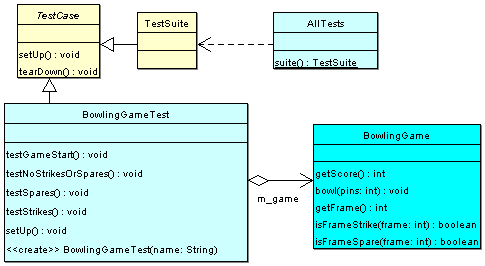I’ve been playing around with ArgoUML, an open-source UML modeling and code generation program. So far, the major drawback for me is the non-standard UI elements because of Swing—I really hate Swing File dialogs—even the “Windows” look and feel ones.
My first impressions are very good. I have spent seven years with Rational Rose and like it very much, but it is out of my price range right now. I haven’t used any other products and I am only interested in packages with some kind of code generation and deep UML knowledge (that rules out generic drawing packages). And, price is an issue. So far, Argo meets all of my basic requirements.
One of the features I think I will like is what they call cognitive support. It manifests itself in a list of suggestions about your model. For instance, in playing around, I have a class with no non-static members or associations. In the to-do list, I see a suggestion to make this a Singleton. Argo also helped me understand some of its conventions by suggesting names for the packages I made. In general, Argo understands UML, and does a great job of helping you create it.
The code generation is in the early stages, and in inadequate for use on a project unless you are using an editor that will seamlessly fix the code into your standard tabbing style. Even when I use UML as a sketch, I like to generate the code as a sanity check to make sure the UML says what I think it says—it’s good enough for that.
Large multi-person projects might find the lack of external packages (packages each stored in their own file) a deal breaker. Rational has very good support for this, and it’s essential when you try to use UML as a programming language, since having one big file becomes a impediment to collaborative development. This extends to property sets as well, which I don’t see how to share between models.
Here’s my first model:

Created to mimic the design in this NUnit presentation.